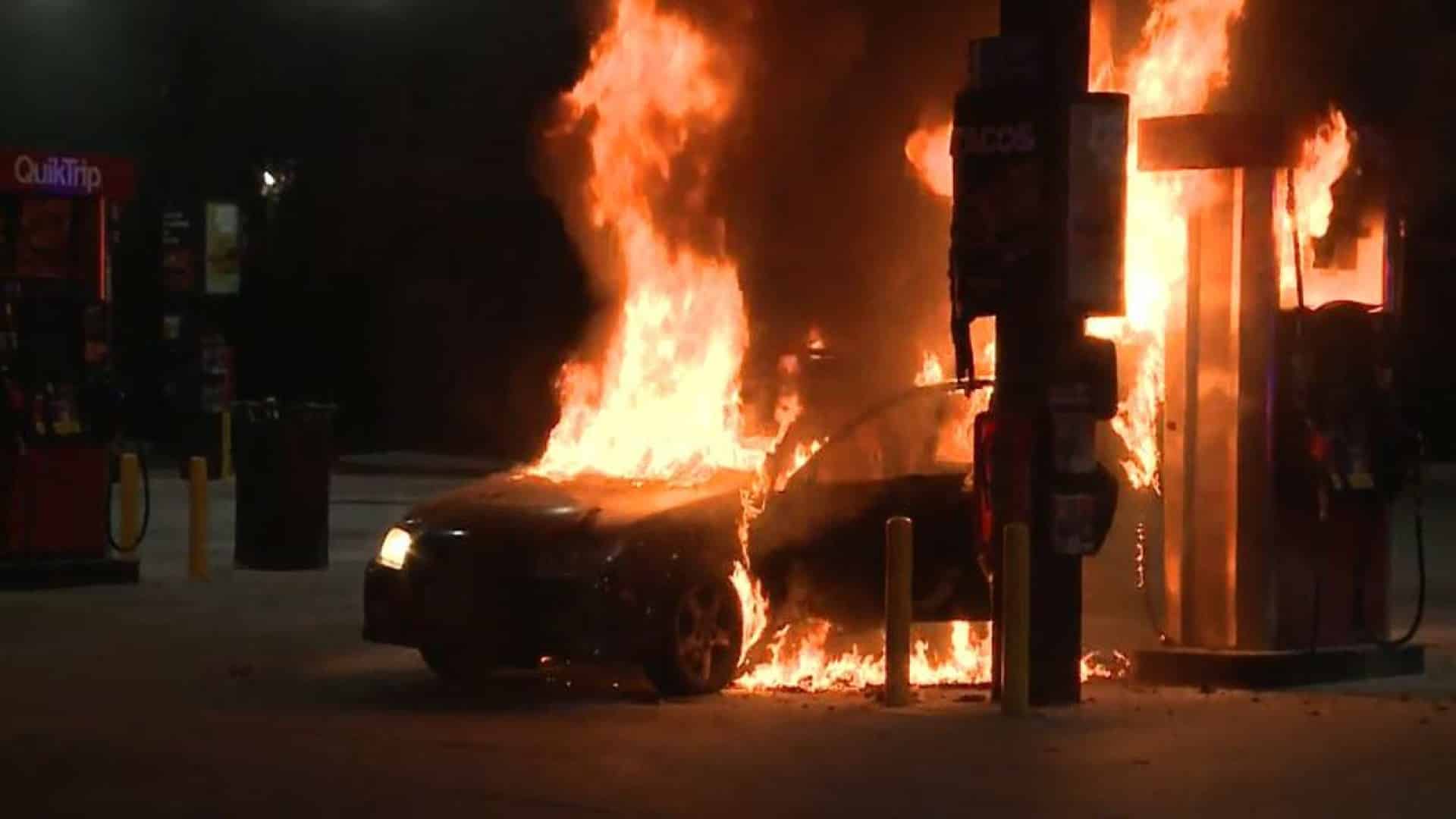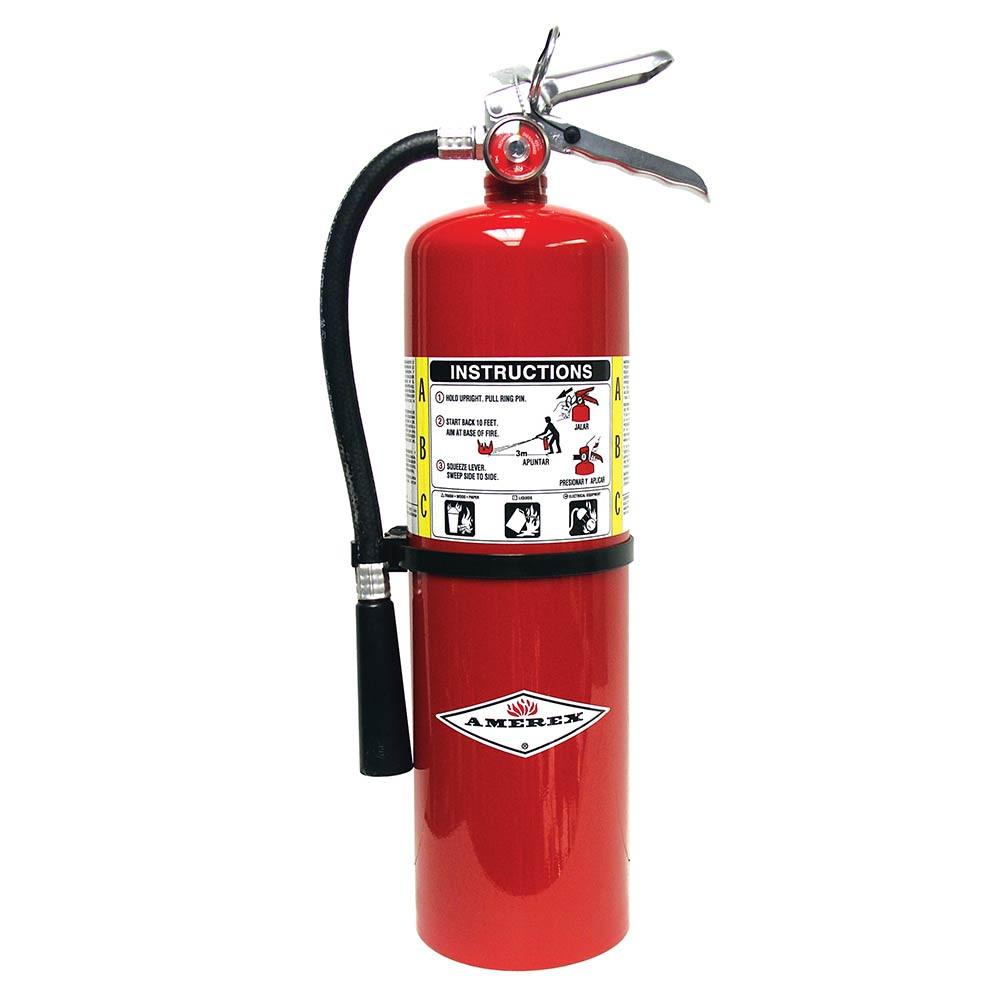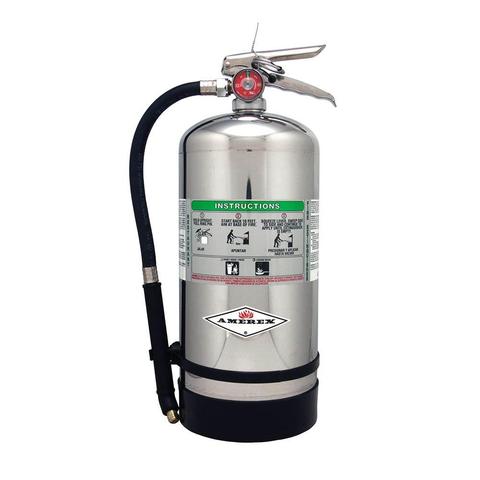Not all Extinguishers (or Fires) Are Equal!
- Class A: Ordinary Combustibles – These are the things you would find inside your home such as clothes, paper, furniture, wood, etc. Class A Fires are also the most common fires we see in the Fire Service. They can be easily extinguished with Fire Extinguishers that utilize Water, ABC Dry Chemical, Halotron, or Foam. (We’ll get into what those means in a bit.)

- Class B: Flammable Liquids – NOT Including Cooking Oils – This includes liquids such as gasoline, oil-based products, solvents, and lacquers. More flammable and dangerous than Class A Fires, they burn fast and hot. The good news is that we also have Fire Extinguishers capable of putting out these fires. ABC Dry Chemical, Carbon Dioxide, Halotron, and Foam can all be used. It is very important to keep these extinguishers near possible hazards and ready to go at any moment.
- Class C: Electrical Equipment – Wiring, machinery, breaker boxes, and motors are all considered Class C Fires. All homes, vehicles, office buildings, and hospitals have some components of electrical wiring or equipment, this creates a potential hazard of electrocution if the wrong extinguisher is used when trying to subdue the fire. ABC Dry Chemical, Carbon Dioxide, and Halotron Extinguishers are common agent used to extinguish these fires and have a really great success rate doing so.
- Class D: Combustible Metals – Magnesium, lithium, and titanium are some of the few combustible metals out there. While these fires are uncommon, they can still be found it certain vehicles and manufacturing plants. They are very difficult to extinguish and emit a blinding, hot white light. Only Dry Powder extinguishers can be used to put these fires out.
- Class K: Kitchen or Cooking Oils – Commonly referred to as grease fires, they can be found in residential homes or commercial kitchens. Throwing water on these fires make things way worse and can spread the fire quickly. Only Wet Chemical Extinguishers are to be used on these fires.
Now that we’ve learned a little about the “classes” of fire it’s time to learn about the Extinguishers and Extinguishing Agents used to put them out. Fire Extinguisher’s come in many different sizes from 2.5lbs to 300lb Wheeled Units. Occupancy, building size, fire load, and other factors all play a major role in picking the correct Fire Extinguisher. (We use a publication called NFPA 10 and calculations to determine which extinguishers are needed). When Fire Marshals come out on a yearly basis for inspections you must have the correct equipment or you will be issued fines, citations, or possibly shut down. Now as we discussed earlier, the extinguishing agents in a Fire Extinguisher differ based on the dangers on the area. We’ll briefly discuss some common agents and how they work.

- ABC Dry Chemical: (Ammonium Phosphate) This chemical is expelled onto the fire, melts at 350 Degrees, and coats to the fuel that is burning which breaks the fire chain reaction. This creates a barrier between the fuel and fire which snuffs it out.
- Carbon Dioxide: Carbon Dioxide works by displacing oxygen, which fire requires, suffocating the fire and stopping the burning of fuel. Carbon Dioxide extinguishers work best on B:C Fires.
- Halotron: Halotron is an agent that becomes a rapidly evaporating liquid when expelled, that interrupts the chemical chain reaction fire needs, along with cooling the fuel to extinguish the fire.
- Dry Powder: (Sodium Chloride) Dry Powder works similarly to Dry Chemical; it creates a layer or crust around the burning metal and separates the fuel from the fire. It’s important to continue expelling the Dry Powder onto the metal even after it stops burning to build up a nice thick layer of Dry Powder while it cools down.

- Wet Chemical: (Potassium Solution) Wet Chemical were designed with cooking oils in mind, which can burn easily over 700 degrees. Wet Chemical utilizes a chemical conversion process called Saponification. Saponification converts super-heated fats and oils into soap and alcohol. This removes heat from the fire and prevents reignition.
Now that you’ve had a little education on fires, extinguishers, and extinguishing agents I hope that you see the importance in finding an experienced and educated professional to help prepare your establishment for any fire emergency. In my next blog post, we’ll discuss some federal, state, and local regulations that apply to most establishments along with what to expect from your Fire Protection Company.

